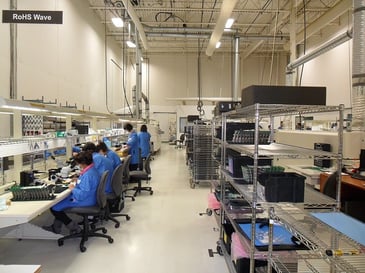 It's become one of the "hot topics" of overseas manufacturing, although it's not one a lot of people like to talk about: Counterfeits and other bootlegs. It's a problem plaguing electronics across multiple industries, Even the US military is having issues with it.
It's become one of the "hot topics" of overseas manufacturing, although it's not one a lot of people like to talk about: Counterfeits and other bootlegs. It's a problem plaguing electronics across multiple industries, Even the US military is having issues with it.
The longer and more globalized a supply chain is, the easier it is for counterfeit components to slip in. Long supply chains are extremely difficult to oversee while, in the meantime, sometimes all it takes is a single corrupt factory manager making the swap.
Then you have no way of knowing what's in your product, and chances are, the end quality will be reduced as well. That means higher post-sale support costs, and possibly even a full recall/reissue.
The best manufacturing partners today are now implementing much tighter inventory management controls, specifically to crack down on counterfeits. If your electronics assembly services aren't implementing these systems themselves, it may be time for a change.
Important Processes For Protected Inventory Management
1 - Per-Part Tracking
There are a variety of inexpensive technologies on the market -including QR Codes and RFID chips- for tracking every component, individually. It adds minimally to the component cost - usually only a cent or so - but can be one of your best forms of protection.
RFID can be especially effective since the counterfeit would need to have a clone of the chip, and that's highly difficult\unlikely. This allows you to keep extremely close track on every component and finished build that passes through the assembly processes.
2 - Central Databasing
These tracking systems are best used in conjunction with a database keeping tabs on movement throughout the supply line. The information can be kept as long as is necessary, creating an ongoing paper trail for the movements of every component.
These systems can easily be set up with 'red flag' warnings whenever an irregularity occurs, allowing you to spot potential problems far earlier in the process. If someone attempts a substitution, the system will spot it.

3 - Nearsourcing
You don't always have a choice in where certain components come from, but you often do. So the smart electronics assembly services are trying to keep supply lines short, whenever possible. Nearsourcing domestically might add incrementally to the individual component costs, but it m
akes oversight far easier, as well as substantially reducing transportation costs.
Also, industrial espionage is becoming another growing issue, with billions being lost per yer due to stolen trade secrets - and overseas factories are big contributors. As things stand, it makes a lot of sense to keep your designs close to home, and in a country with strong IP protections.
4 - Purchase Optimization
Besides, there's an upshot to all these protective processes: The large amounts of data collected can pay off in finely-tuned buys. When you have confidence in your supply chain, your electronics partner can predict component-level failure rates at extremely high levels of accuracy
, allowing you to pre-manufacture spare parts.
This saves money by preventing costly "special" runs on a particular component, and can also pay off in long-term optimizations to the supply chain as a whole.
You Need A Reliable Partner For Your Electronics Production
The star of overseas manufacturing is rapidly waning, as more problems with the process make themselves clear. The best options in manufacturing today are domestic producers who have the control and oversight necessary to guarantee the integrity of your products.
Please contact ZenTech for more information about the benefits of domestic production.





